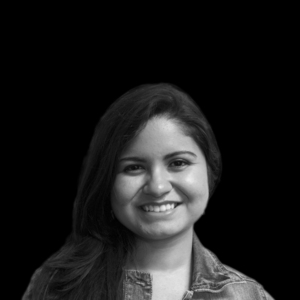Lack of diversity in runway models evident in New York Fashion Week
Pulp
If there’s one fashion-based activity in this whirlwind style world I hate more than shopping for petite-sized skinny jeans, it’s looking for foundation and concealer.
Whether I’m at the wallet-damaging makeup counters at Macy’s or in the over-crowded aisles of CVS, I’m usually standing there, fingernails in mouth, gnawing away at my own tan-colored anxiety.
It’s a process, you see, searching for the perfect shade with the perfect reddish undertones and consistency. Time and time again I leave empty-handed and disappointed, afraid of the few medium-toned shades that might as well look more orange than anything else. During these fragile times, being an Orange woman always feels way too literal for my liking.
It’s safe to say, then, that this year’s New York Fashion Week slightly assuaged my color-palette disappointment in the most minimal sense. According to a Sept. 17 report published by Jezebel.com, this year’s Fashion Week was one of the most racially diverse, with 972 models of color taking over the runway. Now, for a culture plagued by the domination of one-toned women on magazine covers, advertisements and store fronts, it’s a small victory for girls like me who are left to choose between two shades at the pharmacy: “Medium” or “Dark.” With more than 3,736 slots out of 4,708 given to white models, though, it’s hard to feel any change when the change is too small to see.
It seems that when there are instances of strutting forward into better-versed runways, there are always underlying issues that seem to push it all back. Take, for example, Calvin Klein, who decided to go with an all-white roster this year after seasons of having just one model of color in its shows. Calvin Klein joined eight other brands that decided to go with an all-white cast this year, including other top names like The Row and Chloe.
For brands that seem to hold the highest regard in design, the outreach to minority women seems to have been halted by the looks of these numbers, and for designers like Mr. Klein, the definition of diversity has been construed for a while now. It’s important to understand that the need for the representation of “Medium” and “Dark” women doesn’t mean, “Hey, let’s add one Asian model and call it a day. But let’s not make her too dark, OK?”
Diversity is not choosing more models of color for spring collections because their skin tones are the perfect accessory for neon-colored hues. Diversity is not adding a completely different facet to your brand because you just can’t seem to fit minority women in your runway coverage and photo shoots. Vogue, I’m looking straight at you.
If there’s any hope for the fashion world to come to terms with what real diversity looks like, there’s a glimmer of it in the few steps taken by designers like Oscar de la Renta, Jason Wu, Zac Posen and Betsey Johnson, who were among the most diverse shows of the week. It’s like a trickle effect when the highest of the high-brow make it possible for the mainstream brands to take note for consumers.
So in the end, that’s what real diversity looks like. A place where consumers don’t feel an overwhelming amount of pressure in finding the right shade or don’t feel a sense of injustice when the brands they so desperately obsess over, they so carefully cut magazine collages for, reject them in their newest collections. In a sense, whatever fears or achievements about diversity are created on the runway will surely make their way to the store aisles.
Published on September 24, 2012 at 2:00 am






